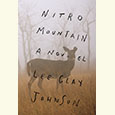The Spirit of the Mountains
Scholar John Lang examines the many faces of God in Appalachian poetry
John Lang’s Six Poets from the Mountain South is not the broad critical survey its title might suggest but rather a scholarly answer to a well-known quotation from North Carolina writer Jim Wayne Miller, one of the six poets Lang considers here. Miller observed that the religious faith of Appalachia has “a decidedly otherworldly outlook,” while Appalachian literature is just as decidedly “worldly, secular and profane.” Lang acknowledges Miller’s stature as the “progenitor of the ongoing renaissance in Appalachian literature” but begs to differ with his characterization of it, which, Lang believes, “does not do justice to the pervasive role that religious and spiritual concerns play in the work of many of the region’s finest writers.”
Through a close reading of the work of Miller, Fred Chappell, Robert Morgan, Jeff Daniel Marion, Kathryn Stripling Byer, and Charles Wright—all post-WWII poets from the Appalachian South—Lang explores what he calls “a crucial tension” between the traditional Christian faith of the region and the freer, less dualistic spirituality of its poets. He sees among them a shared rebellion against harsh, judgmental religion, as well as a deep regard for the natural world, shaped by the beauty of the Appalachian landscape. Beyond that common foundation, however, the spiritual expression of Lang’s subjects is diverse. Robert Morgan, for example, is a doubter who nevertheless “recommends the ecstatic sensibility,” and his poems “incorporate Christianity’s principal metaphor and promise” through repeated images of rebirth and resurrection. Kathryn Stripling Byer consciously rejects Western dualism in favor of Native American-influenced spirituality that celebrates the sacred aspect of nature.
 Wright and Marion, the two poets from Tennessee, find spiritual inspiration in the land, according to Lang, but in markedly different ways. Marion, who grew up in a farming family and once maintained a farm of his own, connects to the earth through the particular agrarian tradition of Appalachia. His work, in Lang’s words, expresses a “commitment to a clearly delineated and delimited rural mountain landscape.” His “spiritual vision of nature’s sacramental identity” is rooted in the sustaining idea of home.
Wright and Marion, the two poets from Tennessee, find spiritual inspiration in the land, according to Lang, but in markedly different ways. Marion, who grew up in a farming family and once maintained a farm of his own, connects to the earth through the particular agrarian tradition of Appalachia. His work, in Lang’s words, expresses a “commitment to a clearly delineated and delimited rural mountain landscape.” His “spiritual vision of nature’s sacramental identity” is rooted in the sustaining idea of home.
Wright, by contrast, does not have a farming background, and agrarian concerns rarely appear in his work. His bond to the natural world has a more abstract character. His poems incorporate many landscapes far from the mountain South, and he has described all of them as “imaginary, invented and reconstructed.” For Lang, Wright “embraces nature both for its physical beauty and for its seeming testimony to spiritual presence,” but he struggles with its apparent indifference.
While Lang’s focus in Six Poets is narrow, he examines each writer’s entire body of work in fairly close detail. The finer points of Lang’s discussion will be lost on readers who aren’t as intimately familiar with the poems as he is, but his complex analysis is likely to spur a desire to become better acquainted with them. Those who assume that the spirituality of the mountain South is limited to dour fundamentalism or snake-handling theatrics will be enlightened by Lang’s nuanced study.


